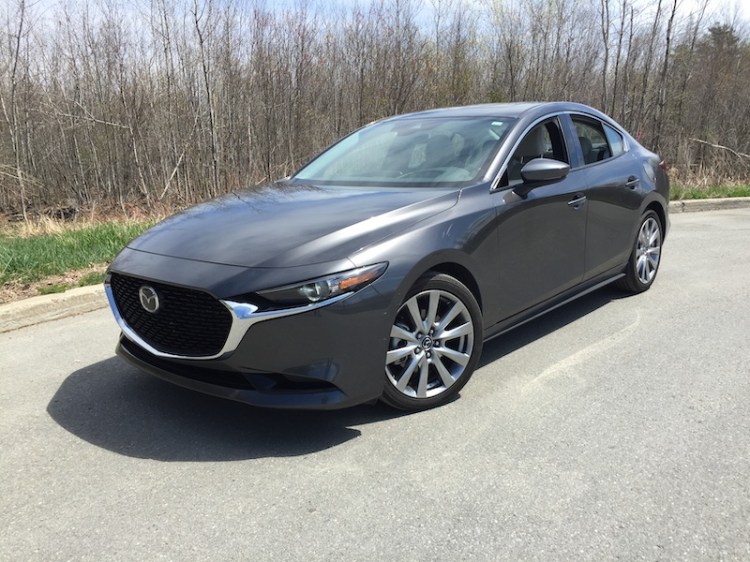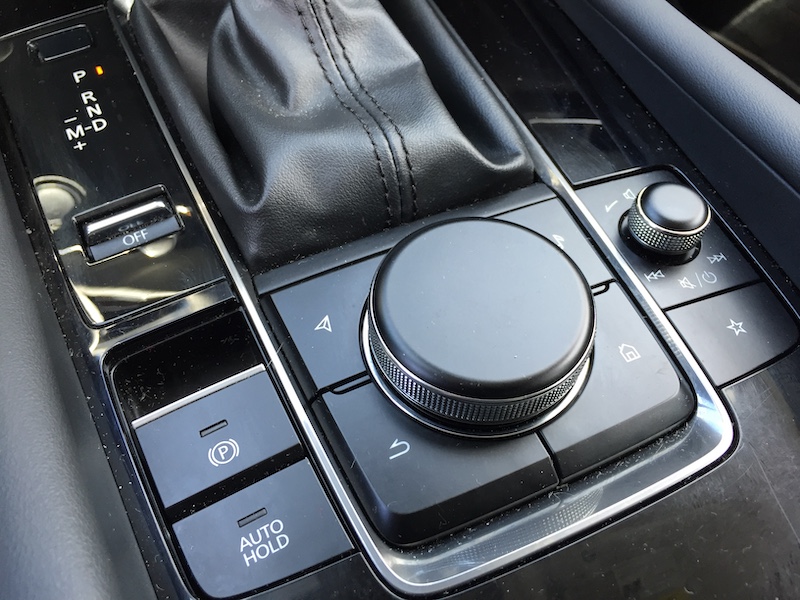When compact car fans set out to buy a new model now, they will find that there are eight remaining mainstream nameplates to pick from—all but one of them produced by Asian-based automakers.
Leading off the segment price-wise are the Kia Forte and Nissan Sentra, both starting around $18,000. Up next is the Subaru Impreza (with AWD), the VW Jetta, and the Hyundai Elantra, each at $19,000, followed quickly by the Honda Civic and Toyota Corolla—the perennial best-sellers here—with pricing starting at $19,500.
Atop the compact car list, price wise, is the Mazda 3, available in four-door sedan or five-door hatchback. With an upscale exterior design, plus an interior finished to look much better than basic transportation, the smallest Mazda sold in America starts at $21,500.
Always a tick different from its primary rivals, and marching to the beat of a different drummer with a hint of ‘zoom-zoom’ designed into the chassis, the 3 could easily be badged with some chrome labels from Mercedes. It looks that much different, and that much better, than its rivals—especially in the luscious Soul Red Crystal Metallic paint.
Through the years, numerous Mazda 3’s have visited. The absolute favorites were the MazdaSpeed 3 hatchbacks that were produced from 2007-2013. This was the height of the “hot hatchback” genre, and Mazda had a winning formula; 2.3-liter turbocharged four-cylinder, light weight, limited-slip front differential, and excellent handling.
These practical five-door cars were a lot of fun. They were quick, really held up well taking heaps of abuse, plus they delivered excellent fuel economy—a trait that escaped many of the MazdaSpeed’s rivals during an era when turbocharging was fast becoming the least expensive method to extract maximum power. Many enthusiast drivers pined for the day that Mazda would put that 263-hp turbo-motor into the MX5 Miata, but that day never arrived.
While the current 3-sedan will impress with its ride and handling composure, this compact offering has truly forsaken its racier roots in pursuit of higher mainstream sales. All four trim levels, Base, Select, Preferred, and Premium, use the same 186-hp 2.5-liter engine teamed with either a 6-speed manual gearbox, or, a 6-speed automatic. EPA ratings are 26/35-mpg for the 3,071-pound sedan, numbers that we bested in late spring.
Key to the latest 3 is the availability of optional AWD. For $1,400, Mazda buyers can match the Impreza to be the only compact cars so equipped for maximum foul-weather handling and traction, a virtue not lost on Mazda’s product planners. Again, marching to a different tune.
All trim levels provide I-Activsense electronic driving assists; adaptive cruise control, automated emergency braking, auto hi-beams, lane departure warning, and lane keeping assist. Like far too many new models, those last two driving aids proved to be more intrusive than real drivers might embrace in the Mazda. Encounter an obstacle in your lane, like a pedestrian, a bicyclist, or an errant trash can and you will react and move out of your lane appropriately. The Mazda’s lane keeping assist sensor will sense you have crossed painted lines on the road and forcibly apply steering pressure directing you back into your lane, shake the wheel, sound an alarm, and generally startle you. Thankfully, there is a deactivation button on the dash, as well as a program selection deep in the menu of apps and car systems on the central dash screen.
The migration to these screens has been a mixed bag for many automakers. Mazda uses four buttons plus a console-mounted large central knob similar to BMW. Radio volume is also on the console, while the screen is not touched at all—meaning no simple tuning knobs for the fine Bose 12-speaker Audio System. These systems work great in showrooms, or traffic jams, but are too distracting for far too many drivers to use while they should be paying attention ahead.
Otherwise, the driver’s info panel is concise analog gauges supported by selectable digital data streams—perfect. The powered leather seats proved supportive, the HID—heads-up display is uncommon at this price point, while the standard powertrain is quite effective at dispatching slower traffic.
Two months into the Covid-19 economic recession, pickup truck sales are dominating the marketplace. Cheap gasoline, hefty incentives, plus a consumer shift away from small cars mean that every competitor in this class needs an edge, a selling point that denotes difference maker.
With an upscale, uncluttered interior that doesn’t pretend, gracious lines outside, plus new optional AWD, the Mazda 3 has the hooks to be different. But will buyers notice enough to jump start sales?
Send questions/comments to the editors.




